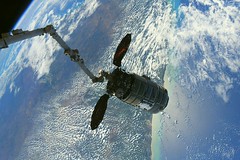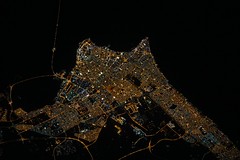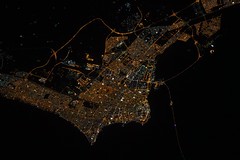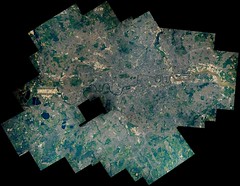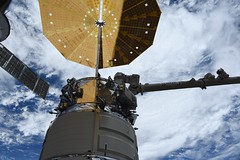Cygnus about to leave
jeudi 1 juillet 2021 à 11:13Thomas Pesquet posted a photo:
À plus Cygnus ! Merci pour toutes les ressources que tu nous as apportées, et merci de repartir avec nos déchets :wink: Le cargo Cygnus NG-15 s’est amarré à la Station bien avant mon arrivée à bord, le 22 février dernier. Vous l’avez vu régulièrement sur mes photos de la Terre #PhotoBombing. Il est parti aujourd’hui : ça nous fait un module de moins, mais comme il embarque avec lui nos déchets (tout brûlera dans l’atmosphère), ça libère un peu d’espace dans la Station :thumbsup:
So long Cygnus! Thanks for all the supplies you brought up here and thanks for clearing out the trash as you leave. Cygnus NG-15 arrived at the Station long before me on 22 February and has served as an extra module since then. Yesterday we said goodbye but packed it with waste first that will burn up on reentry, clearing some space inside the Space Station. The distinctive solar panels you might have seen in many previous images, they are now gone :)
Credits: ESA/NASA–T. Pesquet
607F8752
